Rolf Potts's Blog
September 27, 2016
The Best of Vagabonding…
Looking for the best of Vagabonding over the life of the blog? Take a look at the top content and people’s favourite reads:
Robert Johnson sold his soul to the devil in Rosedale, Mississippi

Last month, while I was driving down the Mississippi River on a magazine assignment, I had a curious experience in Rosedale, Mississippi. As I was eating lunch in a place called Leo’s Market, a waitress mentioned that Rosedale is the place where the legendary bluesman Robert Johnson sold his soul to the devil in exchange for musical genius (an event alluded to in — among other places — the Cohen brothers’ movie Oh Brother, Where Art Thou). As if to prove it, the waitress handed me a wrinkled, typewritten transcription of a “vision” about Johnson’s fateful moment that had appeared to bluesman Henry Goodman as he was traveling the road from Rosedale to Anguila. For the sake of posterity (and because I have never seen it elsewhere), I am publishing Goodman’s “vision” in full below, as well as a postscript by Rosedale’s Crossroads Blues Society.
Interestingly, there are other contenders in the myth of Robert Johnson’s devil-purchased soul — and the crossroads of US 61 and US 49 in Clarksdale is where most blues tourists pay their respects (the newest Romantics album is called “61/49” for this reason). Of course — as with ancient Roman tourists setting off to find “sites” from Greek myths — the location of Johnson’s crossroads is not exactly something that can be proven. He was born in Hazelhurst, and his supposed grave is in Quito (near Itta Bena) — but Rosedale did figure in the lyrics for one of Johnson’s most famous songs, “Traveling Riverside Blues”.
“Lord, I’m goin’ to Rosedale,” he wails, “gon’ take my rider by my side.”
“Traveling Riverside Blues” had a huge influence on rock-n-roll, and was remade as “Crossroads” by Eric Clapton — which mentions Rosedale with the same phrase Johnson uses. It was also covered by Led Zeppelin (whose more well-known “Lemon Song” famously steals a lyric from that same Johnson tune: “You can squeeze my lemon ’til the juice runs down my leg”).
None of this proves much about Robert Johnson’s crossroads, of course, but I for one like the notion that it happened in Rosedale. The text of the “vision” follows… Read More
A traveler’s guide to Buddhist meditation retreats in Thailand
Since I’ve traveled to (and at times lived in) Thailand every year since 1998, I’m occasionally asked to recommend a Buddhist meditation retreat for long-term travelers. I can easily recommend some specific starting points for practicing meditation in Thailand (and if you keep reading, you’ll find a few recommendations below), but over time I’ve found that it’s more instructive to just tell people this: Find your own damn Buddhist meditation retreat! Read more…
Review: Osprey Kestrel 48 backpack and how to choose a great backpack
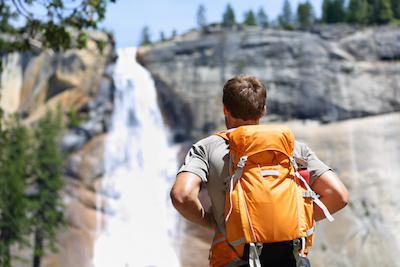 A good backpack can make or break a trip. Drenching rain, language barriers, delayed flights — you can weather all with humor and go-get-’em attitude.
A good backpack can make or break a trip. Drenching rain, language barriers, delayed flights — you can weather all with humor and go-get-’em attitude.
But a good backpack is the foundation upon which your trip rests. It holds your entire life in one place. It protects it. Sometimes you wear it so often it feels like another appendage.
That’s why it’s important to take some time before your trip to figure out what kind of new appendage — or backpack — works for you. Next to figuring out which book to take with me, this decision was the most important on my two-week trip to Europe. Read more…
Questioning safety in Guatemala – at the last minute
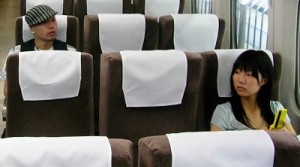 Just three weeks before I’d planned to leave for Guatemala, the first country on my itinerary for my first long-term trip, a friend forwarded an email from her Guatemalan friend regarding my upcoming travels:
Just three weeks before I’d planned to leave for Guatemala, the first country on my itinerary for my first long-term trip, a friend forwarded an email from her Guatemalan friend regarding my upcoming travels:
“My advice is that if she has her heart set on going to Guate, do the volunteering thing and keep travel limited to Lake Atitlan and Antigua … If her heart can be persuaded to go to Nicaragua and Costa Rica, I would highly recommend that … Guatemala is in a sort of state of war where human life is very poorly regarded and that is why if you get mugged it is VERY dangerous …”
She also referenced a New York Times story explaining that the Peace Corps recently decided not to send new volunteers to Guatemala as it is assessing safety.
Ok, I knew Guatemala was a developing country and that there would be dangers, and I’d been armed and ready to explain to my family and friends that I’d be ok. I’d read tons of forums about safety in Guatemala. I’d read numerous blogs about female solo travel. I knew all the places to avoid, all the things to do and things not to do.
But the Peace Corps backing away and a Guatemalan resident recommending against coming? This was enough to give me major pause. Read more…
The worst tourists in the world
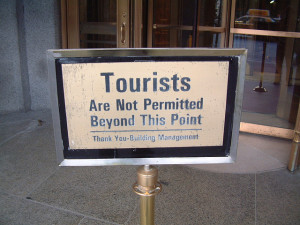 I read with interest a recent study by the Trans-Global Association for Travel and Tourism Commerce, which rated the behavior of tourists from all the world’s industrialized countries. Consistently ranking last in the study — bottoming out in categories ranging from airline etiquette to podiatric hygiene — were travelers from Great Britain. “This settles it,” a TATTC spokesperson was quoted as saying. “The British are the worst tourists in the world.”
I read with interest a recent study by the Trans-Global Association for Travel and Tourism Commerce, which rated the behavior of tourists from all the world’s industrialized countries. Consistently ranking last in the study — bottoming out in categories ranging from airline etiquette to podiatric hygiene — were travelers from Great Britain. “This settles it,” a TATTC spokesperson was quoted as saying. “The British are the worst tourists in the world.”
Actually, I’m just kidding. There is no such thing as the Trans-Global Association for Travel and Tourism Commerce. I made it up just now, because I know that people like to obsess over international rankings, and I’ve been looking for a chance to poke fun at the British.
Mind you, I don’t really think the British are bad tourists. To the contrary, I’ve usually found travelers from the U.K. to be friendly, well read, and quite prolific in their wanderings. You can find Brits in all corners of the world, from Valparaiso to Vladivostok, and they most always make good travel companions.
The problem I have with the British, however, is that — to a bigger extent than other travelers I’ve met — they seem to be obsessed with stereotypes of national character. Read more…
Getting a Magic Tattoo in Thailand
 The monk sat crossed legged behind me. The quick thrust of his bamboo needle repeatedly poked into my flesh as my tattoo began to take shape. I was being blessed with a Sak Yant, a magic tattoo and an ancient tradition in Thailand.
The monk sat crossed legged behind me. The quick thrust of his bamboo needle repeatedly poked into my flesh as my tattoo began to take shape. I was being blessed with a Sak Yant, a magic tattoo and an ancient tradition in Thailand.
Moments before the monk and I had been having a deep conversation. We talked as I expressed my fears, problems I am wrestling with, and my dreams. I told him about some of my struggles of traveling long term over the last four years. How I feel the constant call of the road, but how sometimes I have trouble with all the sacrifices it demands.
We talked for a while about what I want out of life, and the person I am striving to become. When the monk felt he had enough information, he started digging in boxes filled with old scrolls and papers. He finally emerged with an ancient tattoo design. My Sak Yant was a rare form of a paed tidt. It a circle with arrows pointing in different directions. What makes my rare is that most paed tidt only have eight arrows, but mine has 16. Read more…
5 tips for self-studying a foreign language
In a previous post here at Vagablogging, I wrote about what tools you can use to self-study a language. While your choice of tools will determine the success of your program, your approach to studying can make the learning process easier and more enriching. Here are some things you should keep in mind while you’re studying on your own:
Learn everyday. You don’t necessarily have to take on a full-blown lesson each day, but by spending just a few minutes learning something new, you’ll spend less time reviewing in the future. If considerable time passes between lessons, you can’t learn as fast and whatever you learn will be easy to forget. Read more…
Original article can be found here: The Best of Vagabonding…
September 13, 2016
Relationships and Travel
Relationships aren’t always easy. Travel isn’t always easy. Put the two together and there’s always the possibility for disaster! That has been the opposite of my experience. My husband and I met on a tour in New Zealand. He, from Australia and me from New York, we returned to our respective homes after those eight days together and really had no idea if we would ever see each other again. Perhaps it was the universe intervening, but considering, this year we celebrate our seventh wedding anniversary you know how the rest of the story goes.
Our four years of dating were punctuated with international travel adventures of no longer than ten days at a time and a few short stints of living on the same soil together. Our honeymoon was a one-year, around the world adventure that included three months of consecutive travel with the first two weeks of it completely on our own. That was more face time than we had ever had in our entire lives and we truly had no idea what to expect. Turns out, we travel quite well together.
It isn’t always easy. For some we know, travel seems like the most daunting task imaginable. Worrying of all those things you can’t control, dealing with life outside of your comfort zone, figuring out which outfits you might actually want to wear three weeks from now for consecutive days and dealing with the uncertainty of ‘did I remember everything’ sounds miserable to some. For us, it’s different. Travel gets us out of the everyday norm of chores, responsibilities and the minutiae of life. For us, even laundry and food shopping are far more fun on the road. There’s something about depending on each other, making time for each other while maintaining our individual needs and making compromises so each person gets what he or she needs from the journey. No family expectations, no ‘you HAVE to do it this way’, manageable risks and learning to handle the uncontrollable such as sickness, aches and pains, mood swings, lost luggage and rainy days – this is travel. Merging it with relationships whether romantic or friendship takes both work and risk but can lead to unimaginable return.
Stories of adventure keep for decades. Those stories last longer than photo albums and leave a minimal footprint on the planet. Memories of journeys together form a shared history; provide a constant supply of giggles and remember whens and forge familial bonds sometimes even stronger than those of blood relatives. In the end, it’s not only romantic relationships and travel that have their fair share of ups and downs. I had girlfriends that after one adventure (lasting more than a weekend) it led to not only the end of our traveling together but brought on the slow death of our friendship. There are others who after meeting for a minute on the road become friends and future travel partners for a lifetime.
And then there’s the pinnacle of travel mates – ones with whom you would feel completely comfortable if they booked the entire holiday knowing that they consider your feelings and needs and leave time for individual exploration and enjoyment – those friends are definitely keepers. These are the ones you call at 3am when you need to smile or a shoulder to lean on. These are the ones who know how to listen and offer encouragement when needed or talk you off the figurative ledge. These are the ones with whom parts of your life is soldered together without needing any unbreakable vow. These are the ones who call you with a moment’s notice and make you remember again why you always have your passport and extra travel bag on hand and ready for adventure.
Whether traveling across the globe for years, housesitting for a time period or traveling with your best friend to her top bucket list location – travel and relationships aren’t easy. If we travel well together, to me, it says that our friendship or relationship is strong. We can easily maneuver through the nonsense of taking a wrong turn, not feeling well, indecision in restaurant choice and the ‘we have to go here’ days to get to those filled with out of comfort zone experiences, mind blowing moments and creation of endless memories. On the day the husband and I returned from our one-year honeymoon, we began to plan the next adventure. Since then, there’ve been trips as short as one night and as long as sixty-three, international adventures and camping on local soil, road trips a plenty and a cross country hop. Relationships take work, but if you want it, are willing to work at it and are able to merge it with travel journeys, they are the gifts that keep on giving. Happy travels.
Original article can be found here: Relationships and Travel
September 1, 2016
Field guide: Denver, Colorado in the fall
Denver is famously the mile-high country. And now, with the legalization of marijuana (only one of three states to do so), Colorado is more popular than ever.
Denver holds the best of both worlds in her two hands: world-class mountains just an hour west of downtown and a thriving urban downtown home to five major sports teams, a great symphony and theater district, and booming craft beer scene.
I’ve lived in five states, but Colorado is my favorite by far. With amazing weather and more than 300 days of sunshine per year (more than Hawaii gets!), the state offers limitless adventures to be had. And, if you get tired of restraining your adventures within Colorado’s boundaries, the international airport offers a quick getaway.

Best hiking trails
One of the best parts of Denver is how the city has embraced open space filled with trees, grass, coyotes into its city planning. Green areas break open neighborhoods. Just minutes away, mountains beckon for relaxing hikes through pine-scented air.
Hike up an easy 3 mile hike to the quartz cornerstone of the would-be summer White House for U.S. presidents overlooking a jaw-dropping valley.
Or tack on a few extra miles to see the fire-charred ruins of train tycoon, John Brisben Walker’s house, and squint over the plains where Denver’s skyscrapers glisten in the sunlight. Just 30 minutes west of Denver, you’ll feel like you’re miles away from the hustle and bustle.
In the mood for a 4 mile hike with barely no altitude gains that ends in a grave? Check out this trail in Lookout Mountain to see Buffalo Bill’s grave (and museum). You’ll get scenic views over valleys studded with pines and topped by mountains. Only 45 minutes west of Denver.

What are two great day trips from Denver?
Hit the road for a quick 1.5 hour road trip from Denver and check out this ski town in fall. Breckenridge is one of Colorado’s oldest and largest town that began life as a mining town. Now charming shops line the main street. Ride a gondola up the barren ski hills.
Or get out of town and wander through an avenue of golden trees, dazzling your eyes before their leaves fall to darken on the ground. If you want a spectacular display of golden aspen trees in fall, Boreas Pass Road is your paradise.
Fort Collins, Colorado
Just an 90 minutes north of Denver is Fort Collins: a university town nestled next to a reservoir and within eyesight of craggy mountains. Check out Old Town Fort Collins with its bricked buildings and ghost stories. While you’re in town, visit New Belgium Brewing, one of Colorado’s most famous breweries. Make sure to get a reservation for this brewery is super popular.

Can’t miss fall festivals
Watch as hundreds of sand hill cranes gather just outside of Colorado’s famous sand dunes. Every September, the cranes stopover in Steamboat Springs to their wintering grounds in New Mexico and Arizona.
Where: Steamboat Springs, Colorado
When: September 8-11, 2016
Telluride Blues & Brews Festival
Sip craft beer in one of the most gorgeous mountain destinations surrounded by mountains, listening to good blues music. This year’s lineup includes Gary Clark Jr., Joe Walsh and Jason Isbell and many others. Discover great craft beers from around the nation, including many of the finest of Colorado’s burgeoning craft beer phenomenon like Fiction Beer Company and Roaring Fork Beer Company.
Where: Telluride, Colorado
Cost: $199-25 (for 3-day pass or one-day pass)
When: September 16-18, 2016
Gather with thousands of your fellow beer aficionados to taste your way through the largest collection of U.S. beer ever served. If you love beer, this is the event for you. (It’s also the hottest ticket in town come October, so if you want to go, cross your fingers there’s a ticket left for you.)
Where: Denver, Colorado
Cost: $80
When: October 6-8, 2016

Best state parks
White-topped mountains plus sandy dunes resembling those of Arabian Nights is Sand Dunes National Park. These sand dunes are the tallest in North America. Thanks to a fast-flowing creek, you can play in the waves and sand with mountains at your back. Or surf down the sand dunes in your shorts and tee shirt.
Cost: $15
Those postcard photos of lush green hills, deep valleys, and snow-capped mountains? That’s Rocky Mountain National Park. 90 minutes northwest of downtown Denver, this 250,000+ acre national park is a must-see. Like my cousin, you may even see elk running across your camera’s viewfinder.

Denverite’s local food recommendations (not found in a guidebook)
Denver is a budding foodie town — it’s a good town to be hungry in. For a full list of which restaurants are the best in town, check out this list. But if your stomach wants good, filling meals that don’t break the bank, here are my vetted recommendations:
D’Corazon: Mexican comfort food served in a bustling restaurant blocks away from the baseball stadium. Cost: $
Wazee Supper Club: come here for the atmosphere, a white and black checkerboard floor, and the lick-your-fingers pizza. Housed in charming old building, Wazee has been in Denver since 1974. Cost: $
Buckhorn Exchange: Denver’s oldest, original steakhouse. It’s been open since 1893, serving buffalo prime rib, elk, game hen, and more. Opt for their house specialty: Rocky Mountain Oysters. Cost: $$$
Laura Lopuch is a copywriter and incurable traveler. She blogs at Waiting To Be Read where she helps you find your next great book to read because life’s too short to read crummy books.
Photo credits: UC Denver, DayHikesNearDenver, author’s, Denver, David Henderson, Westword
Original article can be found here: Field guide: Denver, Colorado in the fall
August 25, 2016
Choosing Travel
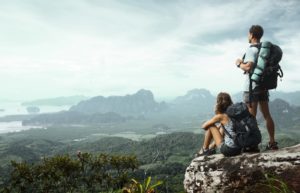
CHOICES.
Often I find myself in conversations about choices. There are those societal norms accepted by the majority (in one area or another) and there are choices. It’s often odd to me that there are these two categories, because to me, they’re all choices. Of course, there are times that there are things beyond our control (disease, discomfort, discrimination, commitments) and there are times that we have no choice but to deal with the hand we’re dealt. But those other ones, those accepted norms and atypical paths are all choices. Whether you own or rent property, if you’re in a city or a suburb, if you’re at home or abroad, if you spend life with a partner or without, if you add to your brood or not, if you have a pet or don’t, if you have cars or use pedal or foot power – whether society says they’re ‘the norm’ or not, they’re all choices. Travel is the same.
For years I’ve had the ‘how do you afford it’ conversation. Mixed in amongst the ‘I have kids, so I can’t’, ‘you’re a teacher so it’s easy’, ‘you’re not married so you have extra cash’ and many like them, travel is the focus but the idea of choice is always in the background. When I first met my husband, he tried to explain the sport of cricket to me. The only thing in life I had to compare it to in my frame of reference was baseball, so I tried. After hours, weeks and even years of listening, you want to know when the first time understanding cricket made sense – when I STOPPED comparing it to baseball and saw it for what it was, cricket. Ending the judgment, comparison, reacting and more provided clarity and ability to see benefits where previously I couldn’t. Choice.
Perhaps many of us don’t see travel as a choice, but rather so much more. Perhaps it’s a haven, solace, energy boost, vice, profession, dream or gut need and feels as natural as breathing, no matter what, it’s a choice. For me, it’s meant constant choices for years. When I got my first teaching job, I booked a holiday as soon as I knew my school breaks. I remember saying to my dad, if I had $1500 and you told me I could buy a couch or go away for a week, I would happily sit on the floor. It’s meant finding the courage to travel on your own when no one else wanted to go to the place you wanted at the time you had. It’s meant finding others who share your passion and want to choose a similar journey. It’s meant cooking and packing lunches to be able to indulge abroad. It’s meant saving money that could be spent on frivolous day to day fun (and finding other ways to enjoy) to know that there’s that adventure planning for the future. It’s meant missing parties or celebrations at the same time as being somewhere else. It’s meant finding ways to keep in touch when you’re out of sight. It’s meant an idea of work to travel and having that goal in mind when you do. It’s meant answering questions and feeling judgments when these decisions were not the norm.
Wouldn’t life be boring if we all chose the same way? One friend chooses fruit on top of her frozen yoghurt while I choose cookie dough every time. My husband chooses carnivore fare while I choose vegetarian. A friend chooses to live with her partner without a marriage decree while another chooses life with that official document. A friend chooses to own a house in the suburbs while I choose a rental apartment in a city. One friend chose to move overseas and bring up her family abroad while another can’t imagine leaving the close proximity to hers. My sister chooses family life with a beautiful and healthy growing brood while (at the moment) I choose a child free one. Some of my former colleagues choose to enjoy life in their home state or country only while I choose to visit and live in places far and wide. No ONE is right or wrong. No ONE is better or worse. Although some are more socially accepted, ALL are choices.
If you have the luxury of choice (which is not the position of everyone for every issue), choose what works for you and yours. Whether it’s comfort or risk, adventure or security, family or solitude, balance or busy, beach or city, rent or own, growth or constants, closed toed shoes or open, coffee or tea – choose for you. Choose what sets your heart on fire and your mind at ease. Choose what brings out your happy and provides that mental boost. Choose to dream big. For me, I choose travel.
Original article can be found here: Choosing Travel
August 19, 2016
10 reasons to travel with your baby before 2 years old
It can be scary taking your under-two-year-old baby on a trip. A day at home can easily fall to pieces with a missed nap, cranky feeding, or weird mood. Who knows what the road will hold?
More importantly, you might wonder if you can handle the stressors of baby + travel without throwing yourself on the floor and crying it out.
I’m sure you can do it — you’ve weathered worse situations and emerged with new stories and strength. Plus, there are some great benefits to traveling with your baby before he hits the two year old mark.
10 reasons to travel with your baby before two years old
Free flight: most airlines allow your under-two-year-old baby to travel on your lap free of charge. Indulge on airfare and save on buying an expensive second ticket while you can. While the FAA recommends your baby travels in his own seat in his car seat, some airlines may let you use an empty seat next to you free of charge if the flight isn’t full. If the flight is full and you brought the car seat, the airlines will gate-check it for free. Be sure to travel with a copy of your baby’s birth certificate to prove your baby is under two years old.
Still naps: avoid mid-afternoon crabbies for everyone in your family by scheduling in a recharge nap session. Not only does your baby get some much-needed sleep, but you can relax guilt-free at your hotel or rented apartment and simply enjoy the moment. Then you’ll be well-rested for great dinner adventures.
No missed school: your baby is too young for preschool or first grade, so she isn’t enrolled in any school but the school of life. You don’t need to worry about making up missed homework or playing catch up after a trip. Traveling will give her a full curriculum of learning.
Small enough to carry: baby’s little legs can only take him so far until mom or dad needs to give him a lift. When your baby is under two years old, he’s usually light enough to carry comfortably in a baby carrier, backpack or atop your shoulders. Unlike when he gets older… and heavier.
Exposure to new cultures: want your baby to grow up into a well-rounded individual comfortable in new situations? Part of that can be exposure to new cultures, people, and languages from a young age. They’ll see different doesn’t equal bad.
Malleable and flexible: typically, at this age, they’re willing to go along with your plans with a minimal amount of fuss. Once they get older, they’ll have their own ideas about what the trip should or shouldn’t include. But now, you’re still in charge of planning.
Cute to forgive a multitude of sins: a wide grin from a chubby-cheeked little guy is enough to make anyone forget a poopy diaper, trail of vomit, or any other chaos. Plus, he’s a natural-born charmer at this age with an innate ability to make friends with everyone.
Non-toys are the best: ever given a baby a toy, only to have them play with the box or wrapping paper? That ability is super helpful while traveling when a vast quantity of toys aren’t readily available. Entertain your baby with plastic cups, sand, sticks or even chasing pidgins.
Under six months old? If you’re still breastfeeding, you may be able to forgo baby foods. Forget the bottles, formula, little plastic spoons and just make sure mom is on the trip.
Curiosity: now is your chance to see the world afresh through a child’s eyes. Spy a morning sunrise, watch birds dive-bombing for fresh fish, or inspect bugs on a summer sidewalk. The world is new and ripe for exploration. When was the last time you felt that exhilarating feeling?
Laura Lopuch is a copywriter and incurable traveler. She blogs at Waiting To Be Read where she helps you find your next great book to read because life’s too short to read crummy books.
Original article can be found here: 10 reasons to travel with your baby before 2 years old
July 19, 2016
Australia – A Guide to the Red Centre

Two months ago, we set off on a few weeks adventure in Australia. After time in Melbourne with family and friends, we ventured into the Northern Territory’s Australian Outback for a few days full of mineral-rich red dirt, countless open expanses and Aboriginal heritage embedded in astounding rock formations.
Tracing the footsteps of Jiles, Goss and Lasseter, travelers continue to flock to the Red Centre annually. Depending on your time frame, how much you’d like to spend and where you’d like to sleep, the possibilities are endless and no matter what, the skies filled with sparkle.
Smack dab in the center of the continent, sits Alice Springs. Formed when the explorers needed repeater stations every 250 kilometers (in order for the telegraph lines to work to speak to the Queen of England), Alice Springs is one of the largest towns in the Red Centre. Situated on the Todd River, Alice Springs’ economic mainstays are tourism, farming and mining. Housing ethnic restaurants, a few supermarkets, Aussie fare, a Subway®, Gloria Jeans®, shops, local artist creations and tourism offices, Alice Springs is a hub for Outback excursions.
Many of the journeys are obvious. The city, set amid a semi-arid dry zone, is a major fly and drive destination where travelers pick up tours headed to Uluru (Ayers Rock), Kata Tjuta (the Olgas) and Watarrka (Kings Canyon). These majestic destinations are over 440 kilometers from Alice and are difficult to fully digest in one day. If you’ve got a few days to spend, there are hours of learning, hiking, Aboriginal culture and entertainment found within the surrounds of these incredible formations.
Hike around Uluru at sunrise to watch the colors arise out of nowhere or sip a sundowner in the evening as the sky darkens around the ever-present rock. Brave the inclines of Kata Tjuta (which means lots of heads) to witness the auburn-coloured vista and rocky terrain. Or spend the day amidst the Gardens of Eden at Kings Canyon as the colours change from red to orange to yellow the further into the canyon you hike. Amidst the rock, there are a plethora of stories to uncover and lessons to learn.
The Aboriginal culture is revered in this area. There are places with cave history, lessons detailed in the caverns or slopes of the giant rocks and even times along your hiking paths that photos are not allowed due to the sacred location on which you’re standing. All who visit can feel the spiritual depth of the region.
Erldunda Roadhouse, situated in the middle of a cattle station, is a highlight in the center of Australia welcoming travelers headed into the Outback. Equipped with Internet, a bar, restaurant, shops, animals, toilets, photo worthy stops and an Emu farm, Erldunda is a welcome sight for weary journeyman. When you finish your pie and sausage roll, head out back to visit with Australia’s largest raptors, the Emus. Check out the texture and weight of an Emu egg that looks like a life-size Christmas tree ornament. Watch the Emus check out the humans as each look each other in the eye while munching on snacks. And if you’re up for an adventure, ask the keeper if you might be able to head into the enclosure and feed the birds. Their large beaks gently nip at your palm as they grab their feed. For a real treat the keeper will plop you in the center of the birds, drop vegetables and fruit around your feet as the birds dive straight towards you forming a giant circle around your every exit as they happily eat their treats. Standing amidst these incredible creatures is an experience to remember.
If you’re plopping down in Alice Springs for a few extra days, there are some other items to add to your travel to-do list. If your legs can still muster up the strength to wander an incline, check out Anzac Hill lookout. The originally dedicated WWI memorial now serves veterans of all wars and is the most visited site in Alice Springs. It’s free to enter and feel free to head towards the top for a view overlooking all of Alice.
If you have a bit more time and $15, take in a tour of the museum of the Royal Flying Doctors Service. For only a few dollars, visitors learn the entire history of the service, about it’s founder (John Flynn) and the progress that continues to flourish today. Delivering emergency services, ambulatory transport, primary and preventative medical services to millions of Australian in remote areas, today the Royal Flying Doctor’s Service operate over 20 bases around rural Australia. Lifesaving services and transport happen regularly with the well-trained doctors and nurses aboard each airplane. Between 1928 and today, with medical services, aircrafts and staff, the service has been a game-changer to the lives of millions around this beautiful land.
The husband, who grew up in a suburb of Melbourne had never visited the Outback before this trip. This visit, the local people and something about the strong spirit of this area of land really touched us both. Everywhere you step, you can feel the strength of the Aboriginal spirit, listen to the lessons of the land and learn something about yourself in the process. According to legend, one of the most significant skills young Aboriginal children can learn in the Outback, is patience. Out of patience, grows all of the other lessons. With patience, one can learn, progress, listen, seek, find and grow. Bring a fly net and visit the Red Centre; your memory card and view of the world will never again be the same.
Photo Credit: ernieski
Original article can be found here: Australia – A Guide to the Red Centre
July 12, 2016
Getting a Magic Tattoo in Thailand
 The monk sat crossed legged behind me. The quick thrust of his bamboo needle repeatedly poked into my flesh as my tattoo began to take shape. I was being blessed with a Sak Yant, a magic tattoo and an ancient tradition in Thailand.
The monk sat crossed legged behind me. The quick thrust of his bamboo needle repeatedly poked into my flesh as my tattoo began to take shape. I was being blessed with a Sak Yant, a magic tattoo and an ancient tradition in Thailand.
Moments before the monk and I had been having a deep conversation. We talked as I expressed my fears, problems I am wrestling with, and my dreams. I told him about some of my struggles of traveling long term over the last four years. How I feel the constant call of the road, but how sometimes I have trouble with all the sacrifices it demands.
We talked for a while about what I want out of life, and the person I am striving to become. When the monk felt he had enough information, he started digging in boxes filled with old scrolls and papers. He finally emerged with an ancient tattoo design. My Sak Yant was a rare form of a paed tidt. It a circle with arrows pointing in different directions. What makes my rare is that most paed tidt only have eight arrows, but mine has 16.

He explained the meaning of this tattoo and the magic Thai script inside. It was the tattoo of an adventurer and explorer. A symbol that would keep me safe while traveling but also make me strong enough to become the person I aspire to be. I person I am always one step behind as I chase him around the world.
The needle hit a nerve, and my back went numb. I felt my skin start to turn red, and heat up, first to a simmer which quickly turned into a boil. As I sat their time seemed to slow, my focused narrowed to a world where only the monk, myself, and the bamboo needle existed. It was as if the magic in the tattoo had cast a spell over the shrine where we sat.
The scorching heat and humidity of a Thailand summer day vanished. The conversation my interpreter was having with my mother, who was traveling wit me for a few weeks, faded from earshot. Even the golden buddhas, and statues that surrounded us disappeared. As I focused on the magic soaking into my back with every needle poke, I started to contemplate a few things.
First, the burning sensation in my back had me debating if my skin had spontaneously burst into flame. Was everyone to here to polite to tap me on the shoulder and say ” Sir, are you aware that there are massive flames protruding from your back”?
Secondly, I focused on the pain, and reflected on the conversation the monk, and I have just had.
Lastly, I tried to commit everything to memory. Getting a Sak Yant from Ajran Rung is a great honor, and I wanted to remember the moment.

A Sak Yant has become one of my favorite travel memories.
Since getting my tattoo, I have had people ask why I would get a Buddhist tattoo. I am not a Buddhist, though I do find value with a lot of the teachings.
For me, a Sak Yant means a couple of different things which are why I got it.
Frist, put aside the magic of a Sak Yant. The tattoo is also a symbol and a reminder. Ever time I see it I am reminded to stay strong through my struggles, and remember the person I want to become! For me, this tattoo is a declaration of self-improvement and a commit to the road.
Another reason I got a Sak Yant was to express my love for Thailand, and it’s culture. It is a country that is dear to me. Whenever I feel travel burnout coming or need a break from moving, I head to Thailand. In many aspects, Thailand is a my second home.
Getting a Sak Yant was an amazing moment in my life and it has become one of my favorite travel memories. not an experience I will forget soon.
Stephen Schreck is a long-term traveler and explorer. He is currently traveling New Zealand where he is putting together his first reader tour.
Photo Credit: art dejavu
Original article can be found here: Getting a Magic Tattoo in Thailand
July 5, 2016
Have baby, will travel: options for baby’s first trip
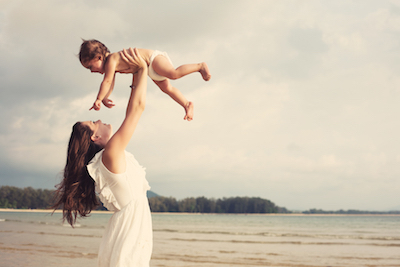 How long has it been since you settled into a train seat for a relaxing ride? Or caught a plane for a weekend getaway?
How long has it been since you settled into a train seat for a relaxing ride? Or caught a plane for a weekend getaway?
Instead your days have been spent teaching your baby how to sleep or wiping spit-up. But once you hit the two-month-old mark, your baby’s big eyes are gulping in the world.
Give that ceaseless curiosity an introduction to the wide world through travel. But which should your baby’s first trip look like?
Here I compare the pros and cons of each journey for your baby’s first trip.

Train
Watch the countryside roll by your windows while wheels clack comfortingly. A hundred years ago, train travel was all the rage. Step back in time with a train trip, dip baby’s toes into each ocean’s waves, and grow sleepy at miles of corn in the prairies.
Pros
Hands-free transportation: no matter how full your hands are with baby, you’ll still get to your destination.
Space: spread out in the spacious train seats. Or turn two seats around to create a four-top and a private little spot for you and your baby.
No baggage fees or restrictions: want to bring the stroller? And a diaper bag? And a suitcase? Sure. Now is a great time to find out what stuff you didn’t need (but brought anyway on this maiden voyage).
Freedom to move: baby feeling restless, needs some slow pacing to help soothe it to sleep? You have the entire train to walk.
Cons
Restricted on destinations: your starting and ending points will be pre-determined by the train’s route. Not a problem if you’re going to a large city like Boston, New York or Seattle.
Lack of privacy: baby starts bawling? There’s no quiet place to retreat to.
Who this trip is perfect for
Looking for a low-stress, easy trip with a baby who doesn’t usually cry? Train travel is for you. Skip this trip if your baby is a frequent howler and you’re concerned about your ability to soothe in a public place.
Ideas for your train trip
New York City to Washington DC: 3 hours with a stopover in Philadelphia. Hit up America’s historic first cities on this train journey.
Vancouver, Canada to Seattle, Washington: 4 hours. Wind down the scenic Pacific coast in this relaxing train ride.
Denver, Colorado to Omaha, Nebraska: almost 9 hours. Conquer the boring plains of Nebraska on baby’s first train ride since you’ll be watching your baby more than the miles of corn.

Plane
Introduce your baby to the grand world of flight courtesy of the Wright Brothers.
Pros
Quick journey: decrease your travel time and increase your time at your destination. Finding joy in the journey is not always true when traveling with a baby.
Baby flies free: for an infant under two years old, you don’t need to buy a flight ticket for her. She travels right on your lap.
Roam further: you’re not restricted by where the train tracks are or how many hours it’s safe to keep baby in a car seat.
Hands-free travel: again, you’re able to tend to baby’s needs and the plane doesn’t need to stop for you to breastfeed — unlike on a road trip.
Cons
Lack of privacy: you’re sharing a relatively small area with your baby and fellow travelers for a couple hours.
Small space: airplane seats are infamous for their lack of space. Sharing it with another human, albeit a small one, could be tricky. You might feel claustrophobic after 2+ hours.
Daunting: to navigate security, baggage check, confined space with your baby and only a narrow aisle to pace if things get dire.
Who this trip is perfect for
Parents who want to take their baby on far-flung destinations and need a maiden voyage. Or maybe you’ve extinguished all destinations close-to-home and want to roam a little further.
Plane trip ideas
Any combo of Boston, Philadelphia, Chicago and New York City: keep your flight duration under 2 hours is best for baby’s first flight
Denver to San Francisco: 2.5 hour flight, San Francisco is a great city for bringing a baby to with its walkable downtown and Pier Market
Los Angeles to Seattle: 2.5 hour flight, downtown Seattle with Pike’s Market is perfect for strolling and exploring

Car
Hit the winding highways with baby in the backseat.
Pros
Take your time: you’re free to stop and start at will, taking your time and enjoying the journey. By far the easiest and most flexible transportation with baby on board.
Rhythmic movement of the car is well-known for putting babies to sleep.
Cons
Every 3 hours: is how often you’ll have to stop. The chest strap on your baby’s car seat presses against his breast bone, making it hard for him to breathe. (That’s how it’s designed.) But it also means you need to give baby a break from the car seat every couple hours.
Baby might hate the car and cry the entire journey.
Every 3ish hours to stop and feed your baby. His belly is small, so it can’t go long hours between meals.
Who this trip is perfect for
Want to see America up close and personal and explore what’s around the next bend? Or the ability to start and stop your journey when a sun-baked beach is perfect to stretch your legs? You’ll enjoy a road trip.
Explore a nearby national park and stay at their accommodations that are frequently just inside or outside of park’s boundaries
Hit up that nearby town that you’ve always driven through, but never stopped and explored
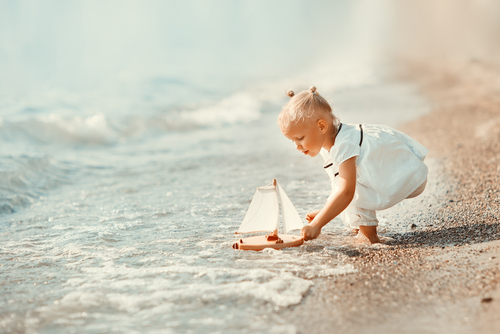
Boat
Want to feel the ocean breeze on your face, have one financial total for your trip, and travel to semi-exotic destinations with your baby? A cruise is for you.
Pros
Food and activities are always available: don’t worry about cooking or figuring out your next meal.
Relax and let the captain steer the ship while you play with your baby, show him the ocean, and snuggle for naps.
Cons
Small accommodations: might not give you the privacy — or space — you need when traveling with a baby.
Pre-planned activities: where you can pick from a very short list. What you want to see might not be on that list.
Traveling to the boat’s departing dock: means you may be piggy-backing a road trip or flight on top of a cruise.
Who this trip is perfect for
If you want an exotic destination without any planning other than picking your dates, and with a set total price, pick a cruise.
Cruise trip ideas
5 nights cruising Miami, Grand Caymen Islands, Key West
10 day voyage from San Francisco to Alaska’s glaciers
Whatever baby’s first trip looks like, remember that you’re showing your baby his first experience with travel. That’s an incredible privilege. May the road rise up to greet you and may this journey go smoothly.
Laura Lopuch is a copywriter and incurable traveler. She blogs at Waiting To Be Read where she helps you find your next great book to read because life’s too short to read crummy books.
Original article can be found here: Have baby, will travel: options for baby’s first trip
June 28, 2016
Finding your voice as a travel writer
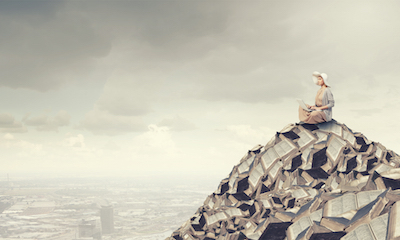 “There is nothing more meaningful than being true to yourself and finding your own voice. Follow your heart and don’t let anyone discourage you.” – Jane Fulton Alt
“There is nothing more meaningful than being true to yourself and finding your own voice. Follow your heart and don’t let anyone discourage you.” – Jane Fulton Alt
Did you ever think about your own voice? What do you sound like when you speak? Have you ever listened to yourself? What would you sound like if you were to write? Could you share yourself with others through words on a page? Are you able to believe in yourself enough to do just that? How do you figure out your own voice?
I’ve gotten a lot of advice about writing, but the best advice has been, ‘write, write often and edit even more’. Today, heaps of people try their hand at writing, but those who continue to hone their craft are the ones who forge ahead. No matter the genre, write. How do we know what to write, how to write and how to sound? How do you trust yourself to write in a way that others understand, and even more, want to read? How do you trust your own words?
“There is no one alive that is youer than you.” – Dr. Seuss
For those journalism or English majors out there, there was coursework galore. For those without those degrees interested in diving into this sea of data, it’s there too. Similar to finding the types of books you enjoy or television shows to watch, there’s informal research involved in finding your own voice. Remember the advice of your youth group advisors, coaches, mentors, teachers, and channel the best bits into your work. Think of your favorite on-screen characters who played writers and journalists and see if anything they did could work for you. Read and watch the works of others you admire and respect and even those you think are doing it in the completely different way you ever would – you never know from where you can learn something.
It’s true – it’s not always your voice that pays the bills where writing is concerned. There are many times that you silence yourself for that well-paying content marketing company, that ‘can you help me write my resume’ paying gig or the ‘I need a blog post about whatever’ request on the ‘find a job platform’. But finding your voice matters more than you think. Channeling who you are, what’s important to you, what your heart says, what you believe in and what you’d like to share with the world sets your writing apart from others. You can tell stories your own way. You can share your mind with the world and be sure others hear the way you see the world. Trust yourself. Be yourself. Put your words on paper and set them free.
“It takes courage to grow up and become who you really are.” – E.E. Cummings
It doesn’t happen overnight. Perhaps you try one way for a while and tweak it as you grow. Find quotes that peak your interest and use them as stepping-stones for new ideas. Change your environment, have new experiences, talk to people – use what you know and write. It may be only for you, your own blog, your journal, for poetry class or that soon to be published manuscript, but it’s yours and yours alone. Those same words your primary school teacher reminded you on that very first day of school are as important now as they were then…be yourself, no one else can be you.
Original article can be found here: Finding your voice as a travel writer
June 22, 2016
Things I learned traveling with my mother
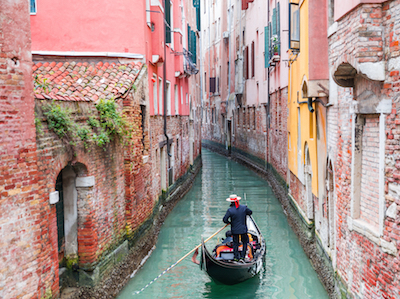 At the end of last year, I had the honor of showing my mother, Europe for the first time. More importantly than her first time in Europe, it was her first time venturing out of the country.
At the end of last year, I had the honor of showing my mother, Europe for the first time. More importantly than her first time in Europe, it was her first time venturing out of the country.
When my mother made plans to visit me in Italy, I envisioned my role as a tour guide. I was not expecting my mother to teach me anything new about travel, or life on the road. However, I was pleasantly surprised that traveling with my mom and brother taught me a few life lessons and turned me into a better traveler.
I get my wanderlust from my mother.

The most important lesson I learned through multicultural travel with my mother was that over time and traveling the world for so long I had lost something.
On my mother’s very first day in Italy, we wandered Venice. As we roamed aimlessly through the maze of narrow streets and cobblestone alleyways, I could not help but notice the amazement on her face as she took in a foreign city for the first time. I saw the reflection of the passionate traveler I used to be in the expression of awe on her face.
It was evident at that moment that while I was the traveler in my family I got my wanderlust from my mother.
Now, my mother cannot get enough of traveling. Since her first trip just a few months ago she has visited me in South East Asia. She is also planning on backpacking New Zealand with me this Christmas. My mother is now a full-fledged travel addict.
Seeing my mom react this way to travel was fantastic. However, it also gave me an awareness that after four years on the road I had lost some of the wonder and amazement that travel brings. This showed me I needed to reevaluate some parts of my lifestyle. Now I once again look at travel with wonder and amazement.
Traveling with different generations taught me patience.
Another thing I learned from traveling with my mother is patience. I am not often alone on the road. I always make friends in hostels easy. However, all my major decisions I still have to make myself. Traveling with my family, I lost some power of making decisions. All of a sudden there were multiple opinions on where we should go and what we should do with our day.
Different generations have different priorities, different times we wake up, and types of sites we want to see. It was frustrating, sometimes, planning the day, or a couple of times when I knew we were making mistakes.
I would explain to my family why it was a mistake but not being experienced travelers they didn’t see it from my point of view.
A few times I had to let us make mistakes.
I had to swallow my frustration and learn patience. Not to say I am a perfect traveler. I make mistakes almost daily on the road.
After traveling by yourself so much time you sometimes forget how to have patience and compromise with others. My family was a good reminder of how to travel with people and have patience with them.
Traveling with my family brought us closer together.

I don’t get to see my family a lot. Maybe once a year I visit home for a month or two.
Although, most of the time I am on the road having adventures, and experiencing other cultures. Each moment I share with my family is precious and having experienced other cultures together strengthen our bond and let us make lasting memories.
Exploring Europe with my family and multi-generations were rewarding. It came with it share of challenges but overall it was an amazing experience that reminded me helped me improve as a traveler and reminded me of why I feel in love with travel in the first place.
Stephen Schreck is a travel and instagram addict. You can read more about his experiences traveling with his family on his travel blog
Original article can be found here: Things I learned traveling with my mother
Rolf Potts's Blog
- Rolf Potts's profile
- 323 followers






